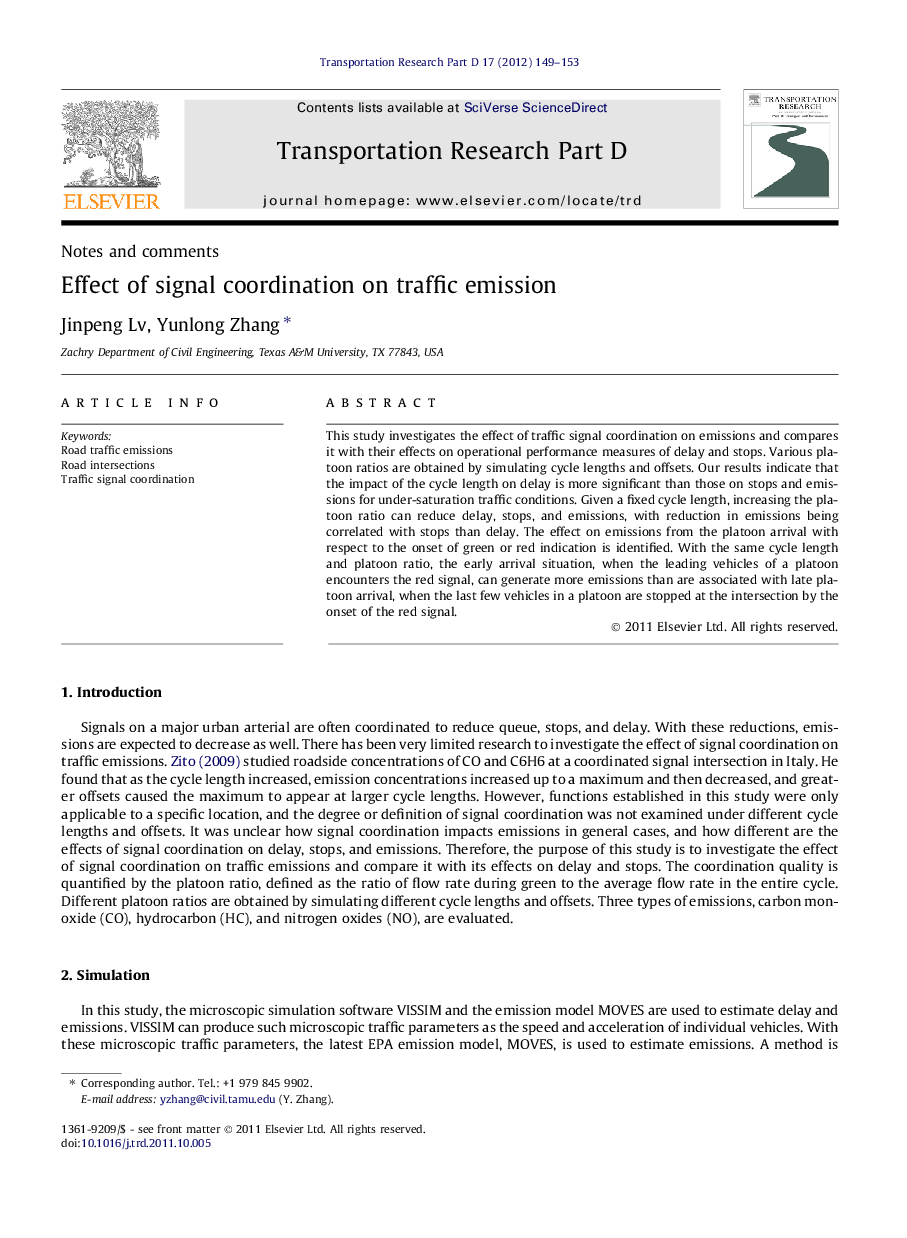| Article ID | Journal | Published Year | Pages | File Type |
|---|---|---|---|---|
| 1065875 | Transportation Research Part D: Transport and Environment | 2012 | 5 Pages |
This study investigates the effect of traffic signal coordination on emissions and compares it with their effects on operational performance measures of delay and stops. Various platoon ratios are obtained by simulating cycle lengths and offsets. Our results indicate that the impact of the cycle length on delay is more significant than those on stops and emissions for under-saturation traffic conditions. Given a fixed cycle length, increasing the platoon ratio can reduce delay, stops, and emissions, with reduction in emissions being correlated with stops than delay. The effect on emissions from the platoon arrival with respect to the onset of green or red indication is identified. With the same cycle length and platoon ratio, the early arrival situation, when the leading vehicles of a platoon encounters the red signal, can generate more emissions than are associated with late platoon arrival, when the last few vehicles in a platoon are stopped at the intersection by the onset of the red signal.
► Evaluate the effect of signal coordination on emissions. ► Increasing platoon ratio reduces delay, stops, and emissions. ► Emission change follows the pattern of stop change better than that of delay change. ► Early platoon arrival generates more emissions than late platoon arrival.
